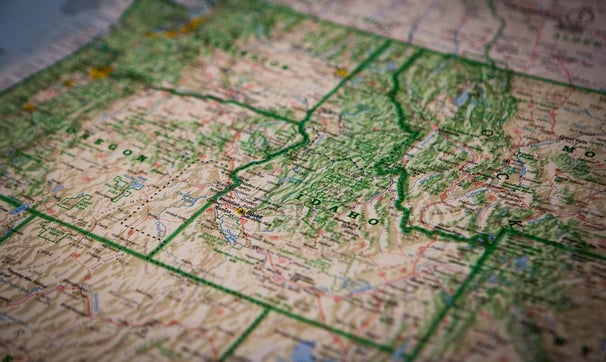Wilderness Survival Skills: Navigation Without a Compass
BUSHCRAFTEDUCATION


In today's modern world, we heavily rely on technology for navigation, using GPS-enabled devices and compasses to find our way around.
However, in a wilderness survival situation, access to such tools may not be available or practical. That's when mastering navigation without a compass becomes a crucial skill. In this blog post, we will explore essential techniques to help you navigate through the wilderness successfully without relying on any external aids.
Understanding the Sun and Shadows:
One of the oldest and most reliable methods of navigation is using the sun and shadows to determine direction. As long as you have a clear view of the sun, you can use it as a reference. The sun rises in the east and sets in the west. In the Northern Hemisphere, you can find the approximate direction of north by using the following technique:
Place a stick or straight object vertically into the ground and mark the tip of its shadow with a stone or twig.
Wait for about 15 minutes and mark the tip of the shadow again.
Draw a straight line between the two marks, and this line represents the east-west direction. Stand with your left foot on the first mark and your right foot on the line between the two marks. You will be facing north.
Utilizing Natural Landmarks:
In the wilderness, natural landmarks can serve as valuable navigational aids. Mountains, rivers, valleys, and other distinctive features can help you get a sense of direction and location. Before setting off on your journey, familiarize yourself with the local topography and try to memorize significant landmarks. As you move, periodically check for these landmarks to confirm your route and avoid getting disoriented.
Observing the Stars:
On a clear night, the stars can be a reliable guide for navigation. The North Star, or Polaris, is especially useful in the Northern Hemisphere. Locate the Big Dipper and extend an imaginary line from the two stars at the end of the dipper's bowl to find the North Star. It will help you find the general direction of north.
Tracking Natural Signs:
Nature provides subtle signs that can indicate direction. Observing the growth patterns of trees and plants can be one such clue. Moss tends to grow on the northern side of trees due to lower sunlight exposure. Additionally, in the Northern Hemisphere, tree branches often have more foliage on the southern side because they receive more sunlight. By paying attention to these indicators, you can infer the cardinal directions.
Using an Analog Watch:
An analog watch can act as a makeshift compass. Point the hour hand towards the sun, and then find the angle bisector between the hour hand and the 12 o'clock mark. This line points south in the Northern Hemisphere and north in the Southern Hemisphere.
Conclusion:
Mastering navigation without a compass is a vital skill for any wilderness adventurer or survivalist. In situations where modern tools fail, the ability to read nature's signs and use basic techniques like observing the sun, stars, and natural landmarks can mean the difference between being lost and finding your way home. Remember that these skills require practice and experience to become proficient, so consider honing them in safe environments before venturing into the wild. Embrace the knowledge of the ancients and the wisdom of the wilderness to navigate confidently and survive any wilderness challenge.
